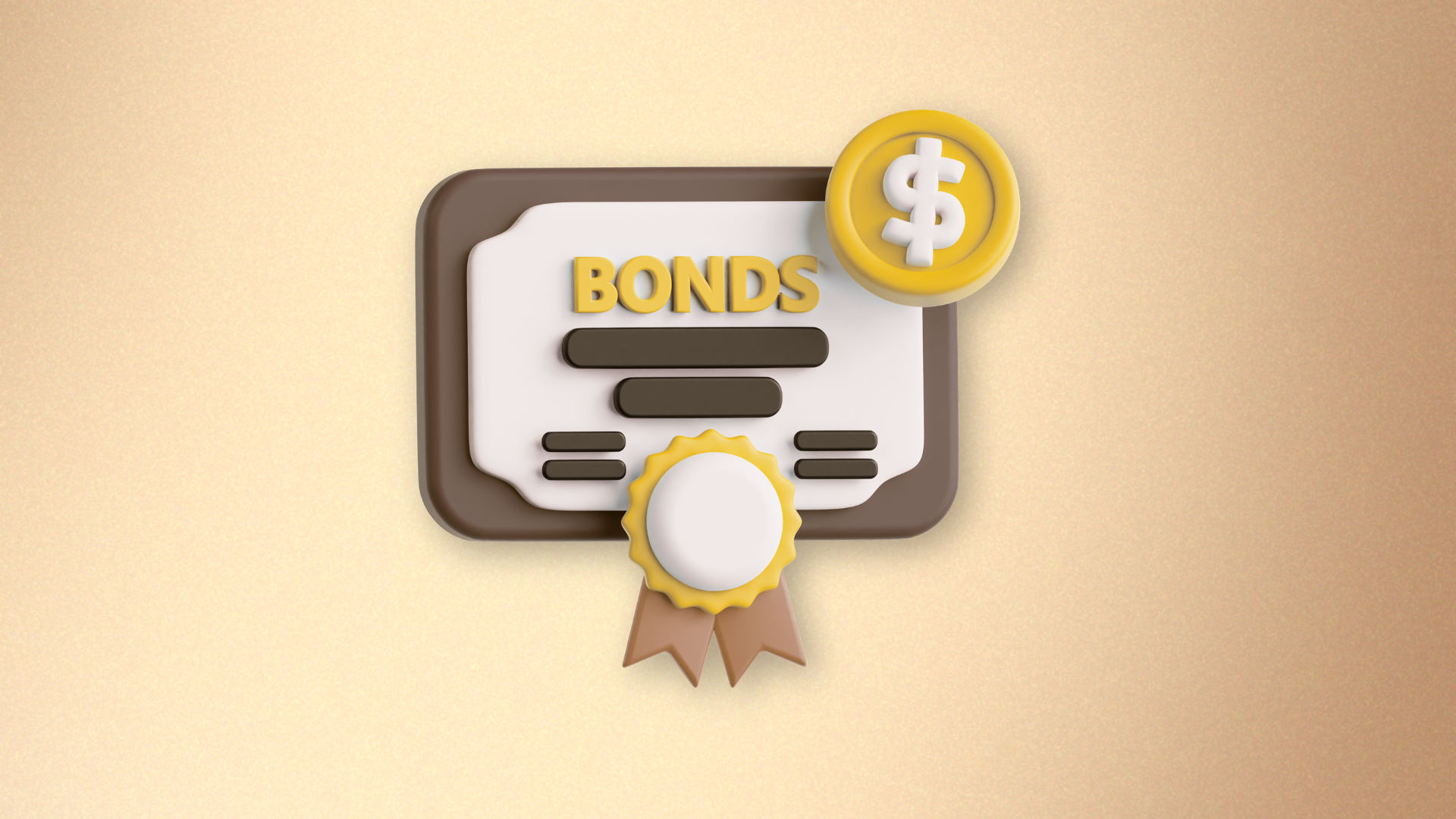Have you thought about why some people talk about bonds “performing well” when they’re supposed to give fixed returns? If you’ve kept your money safely parked in Fixed Deposits (FDs) for years, this might seem confusing. After all, if something promises to pay you 7% interest, that’s what you’ll get, right? Well, not exactly.
In this KOFFi Break, we will help you understand how this difference could significantly impact your investment decisions.
How Bonds and FDs Work?
Let’s start with what most of us know well, Fixed Deposits. You deposit ₹1 lakh at 6% for five years, and the bank promises to pay you ₹1.33 lakhs at maturity. Simple and predictable.
Bonds work similarly. The government or a company borrows your money (say ₹1,000) and promises to pay you interest (perhaps 7% annually) and return your principal amount at the end of a fixed term.
But there’s a crucial difference, most bonds can be traded in the market before they mature. This seemingly small distinction creates an entirely different investment dynamic.
What is Yield?
When we talk about bond yields, we’re considering the annual return you get from a bond based on its current market price, not its face value. This is called the “current bond yield” or “yield-to-maturity” (YTM).
Here’s a simple example:
You buy a 10-year government bond with a face value of ₹1,000. It pays 7% interest annually (₹70 per year). If the market price remains ₹1,000, your yield is 7%.
But what if the market price changes to ₹900?
You will still receive ₹70 yearly, but now your yield becomes 7.8% (₹70 ÷ ₹900). Similarly, if the market price rises to ₹1,100, your yield drops to about 6.4% (₹70 ÷ ₹1,100).
That’s why bond market prices and yields move in opposite directions, when one goes up, the other comes down.
Why Bond Prices Fluctuate?
Imagine you had bought a 15 year government bond last year that pays 6% interest. This year, the RBI increases interest rates, and new bonds start offering 7%.
What happens to your bond? Would anyone buy your 6% bond at full price when they could get a 7% bond for the same amount? Probably not. Your bond’s market value will drop until its yield becomes comparable to the new 7% bonds.
Consider, if interest rates fall to 5%, your 6% bond suddenly looks attractive. Investors will pay a premium for your higher-yielding bond, pushing its price up (and its yield down to match the market).
Factors That Affect Bond Prices
While interest rates plays an important role, several other factors influence bond prices:
- Credit Risk: If investors start panicking about the government’s or company’s ability to repay, they’ll demand higher bond yields to compensate for the risk, pushing prices down.
During the COVID-19 pandemic, many corporate bonds saw their prices fall dramatically as investors questioned whether companies could survive the economic shutdown.
- Inflation Expectations: Bonds promise fixed payments, which become less valuable in high-inflation environments. When inflation expectations rise, bond prices typically fall.
- Time to Maturity: Longer-term bonds are more sensitive to interest rate changes than shorter-term bonds. A 1% interest rate increase might drop a 1-year bond’s price by 1%, but a 20-year bond’s price by 15%.
- Liquidity: Some bonds trade more actively than others. Less liquid bonds usually trade at lower prices (higher yields) because investors demand compensation for the difficulty of selling quickly if needed.
- Global Market Movements: Foreign investment flows can significantly impact Indian government bond prices. When global investors pour money into Indian bonds, prices rise and yields fall, and vice versa when they withdraw.
Why This Matters for Your Financial Planning
You might be thinking, “If I hold my bonds until maturity, do I need to care about all this?”
Yes, for several reasons you need to care:
- Emergency Cash Needs: If you unexpectedly need to sell your bonds before maturity, their current market value becomes very relevant.
- Portfolio Valuation: The current value of your investments affects your overall financial picture, potentially impacting other decisions.
- Interest Rate Strategy: Understanding bond pricing helps you make smarter decisions about when to buy bonds and what maturities to select.
- Debt Mutual Funds: If you invest in debt funds, remember that they hold bonds that are marked-to-market daily. Their NAV fluctuates based on bond price movements.
Fixed Deposit Connection
Now, here’s where it gets technically interesting for FD investors. Your FD would behave exactly like a bond if banks allowed it to be freely traded.
If you have a 3-year FD at 7% and new FD rates jump to 8%, your FD has become less valuable in relative terms. If you could sell it, you’d have to accept less than your principal amount.
Banks actually do something similar when you break an FD early, they typically pay you a lower interest rate, which is conceptually similar to selling a bond at a lower price.
Best Practices for Investing in Bonds
Now that you understand how bond yields and prices work, here are a few practical tips to help you invest smartly in bonds:
- Match Bond Duration with Your Goal: Pick bonds (or debt funds) that match your investment horizon.
- Short-term goals? Stick to low-duration or money market instruments.
- Long-term goals? Consider long-duration or gilt funds.
- Don’t Chase High Yields Blindly: High yield often means high risk. Check the bond’s credit rating and the issuer’s financial health before investing. A higher coupon doesn’t always mean a better investment.
- Diversify Across Types and Maturities: Spread your investments across different bond types — government, corporate, and even debt mutual funds — to reduce concentration risk.
- Watch the Interest Rate Cycle: If you expect the RBI to cut rates soon, it’s often smart to lock into longer-duration bonds or debt mutual funds ahead of time. Once rates drop, these bonds gain in market value.
- Understand Liquidity Before You Invest: Not all bonds are easy to exit. If you may need to sell early, choose more liquid options or funds that invest in such instruments.
- Track Inflation and RBI Commentary: Falling inflation usually signals that RBI may reduce rates. RBI’s monetary policy statements offer clues—watch for terms like “accommodative stance” or “scope for easing.”
Final Thoughts
The next time someone talks about bond yields rising or bond prices falling, you’ll understand they’re describing two sides of the same coin. In the world of fixed income, “fixed” refers to the payment amounts, not the investment’s market value.
Whether you’re considering government bonds, corporate bonds, or even debt mutual funds, remember that their market value fluctuates inversely with interest rates. This isn’t a flaw but a fundamental characteristic of fixed-income investments.
As interest rates in India continue to evolve with economic conditions, keeping this knowledge in mind will help you make more informed investment choices, and perhaps see your trusty FDs in a new light.
After all, in investing, what you don’t know can cost you more than what you lose in a bad market.
Was this helpful?
Click on a star to rate it!
As you found this post useful...
Follow us on social media!
We are sorry that this post was not useful for you!
Let us improve this post!
Tell us how we can improve this post?






 Ask us Anything!
Ask us Anything!